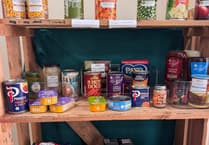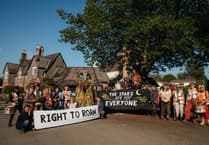HOAXES, propaganda and misinformation posing as fact, amplified and spread on social media, are so powerful that they can influence public opinion and even affect elections.
Facebook is introducing new tools to control its spread and Wikipedia plans to fight it with Wikitribune, a website that uses only evidence-based journalism. Meanwhile, Vodafone will not advertise on fake news sites.
In the past, media outlets have published stories that turned out to be untrue. But fake news is deliberately created to misinform people, whether for fun, malice, or to support someone’s ideological agenda.
Adults find it hard to recognise fake news and rumours online. Imagine how tricky it can be for young people. We need to help them develop the skills to question what they’re seeing and to recognise exaggeration and lies, just as they should in their offline lives.
WHAT CAN
YOU DO?
Encourage your child to ask you if they are unsure if something online is true or not. If they do come to you, discuss who shared it and why, how reliable the source is, or whether the story looks or feels like an advert. Teach them to ask the following questions:
Can you trust the person?
Make sure they know that not all sources are reliable. If an unverified social media account posts that a band has broken up, it could be from anyone. The band’s official account or website is more likely to be trustworthy.
Verified Twitter or Instagram accounts have a small blue badge with a white tick next to the name. While not every official account has a badge and not every account that has one can be trusted, it’s a factor to consider.
Why are people sharing this?
Discuss with your child whether they’re more likely to share something on social media if it’s funny, exciting or shocking and that posts and online news like that spread quickly because people want to be the first to pass it on.
Even if a correction is posted, it’s unlikely to receive the same attention and the damage is already done.
Whose side are they on?
Talk about bias and urge your child to get a balanced perspective by checking several sources — not just one.
Is it real?
Advise your child to check stories for manipulated images or videos and to check the web address (URL). Many fake news sites mimic genuine ones by making small changes to the URL.
Copy courtesy of Gary Crossing at Vodafone’s Digital Parenting magazine. Free copies of the latest issue of Digital Parenting magazine can be found at parentzone.org.uk/Digital-Parenting-Magazine-order-here
Magazines are also available from: Carphone Warehouse, Tavistock; ABC Services, Tavistock; Chez Vous PC, Yelverton; Richard Davies Computer Services Ltd, Mary Tavy; Bere Computing Services, Bere Alston.





This article has no comments yet. Be the first to leave a comment.